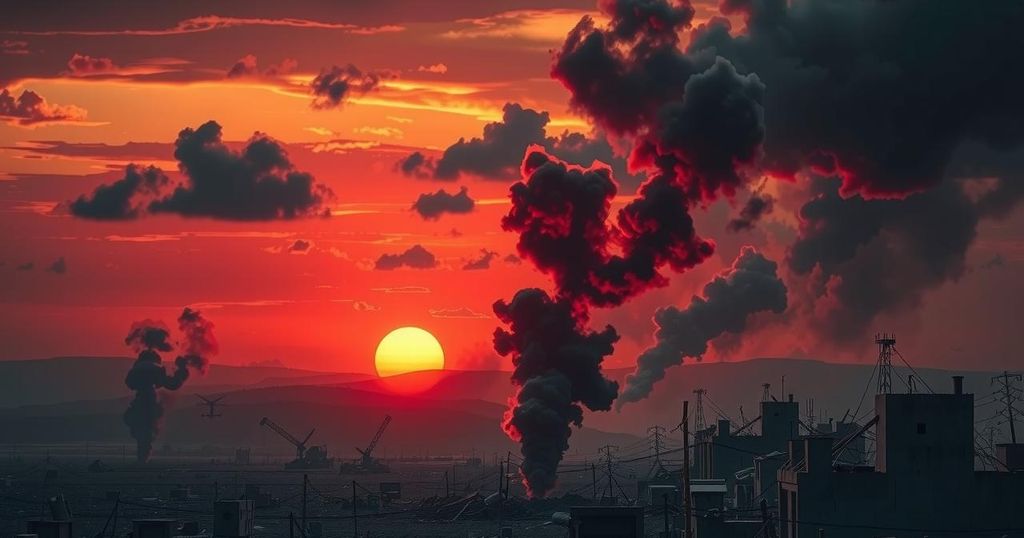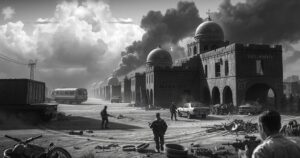Trump Grapples for Upper Hand in Debate Over Damage Caused by US Strikes on Iran

President Trump continues to defend the effectiveness of U.S. airstrikes on Iran’s nuclear program amid conflicting intelligence assessments. Criticizing media reports, he asserts significant damage was inflicted. While discussing potential negotiations with Iran, Trump’s remarks reflect a blend of confidence and contentiousness over military decision-making as he navigates domestic and international opinions.
On the global stage, U.S. President Donald Trump is facing intense scrutiny over the effectiveness of recent airstrikes targeting Iran’s nuclear program. He has responded by directly attacking media reports concerning intelligence assessments, arguing that these reports downplay the strikes’ impact. According to Trump, upcoming talks between U.S. and Iranian officials could open avenues for dialogue while Tehran maintains its nuclear ambitions.
During an event in The Hague at a NATO summit, Trump dismissed a preliminary intelligence evaluation that suggested the strikes only caused minimal damage to Iran’s nuclear capabilities. He contended that American intelligence agencies lacked a complete understanding of the situation. “This was a devastating attack, and it knocked them for a loop,” Trump asserted, standing by his claim of a significant victory.
Trump’s administration plans a news conference aimed at bolstering support for the military pilots involved in the strike, framing the operations as a historic success. He described reports of limited impact from the strikes as “Fake News,” emphasizing that the pilots were disheartened by the media coverage.
As discussions on European security unfolded at NATO, the American president remained fixated on Iran. He referenced an Israeli claim that these strikes resulted in a delay of years for Iran’s nuclear development, which contradicts the intelligence assessment from U.S. officials that only suggested months of inhibition.
However, the nagging question remains: how effective have these strikes truly been? Secretary of State Marco Rubio, in a more cautious tone, indicated that Iran is now “much further away from a nuclear weapon” than before Trump’s actions, but he refrained from claiming any definitive success.
The complexity of the situation fuels a heated debate. Critics point out that assertions of damage from such military actions often clash with the messy realities on the ground. Jeffrey Lewis, a nonproliferation expert, questioned Trump’s statements, noting the contradiction in claiming both immediate certainty and a lack of complete information about the aftermath.
Future diplomatic efforts are critical if the U.S. aims to protect against Iran’s potential nuclear resurgence. Despite noting future talks with Iranian officials, Trump expressed a rather nonchalant stance about needing an agreement, asserting that the damage inflicted might preclude any rebuilding efforts by Tehran.
Iran maintains that its nuclear aspirations are intended solely for peaceful purposes, a narrative that the U.S. and Israeli governments fiercely contest, viewing it as a cover for weapon development. Trump’s ongoing grievances with intelligence leaks, a recurring theme of his presidency, have surfaced again as he labeled the media and intelligence personnel pejoratively.
As Trump campaigns for public opinion support in the aftermath of these strikes, the intelligence assessment crafted by the Defense Intelligence Agency remains a source of contention. Critics like Leon Panetta, a former national security official, opined that any rigorous evaluation of the damage caused would take weeks, if not longer, to yield conclusive data.
Amid the clash between Trump and the media, claims of significant damage to Iranian facilities emerged from various government officials. Citing “credible intelligence,” CIA Director John Ratcliffe suggested that crucial components of Iran’s nuclear program were indeed destroyed, requiring extensive reconstruction efforts.
Trump argued that questioning the strikes’ effectiveness undermines the military’s efforts, insisting that the attack marked a conclusive end to the current conflicts, much like pivotal moments in World War II. During a briefing, he pointed to satellite imagery purportedly showing the catastrophic damage to Iran’s nuclear sites, reinforcing his narrative.
Moreover, the fate of Iran’s enriched uranium remains unclear. Trump claimed that Iranian officials likely could not evacuate materials in time due to the swiftness of the action. Moving forward, the White House is reportedly considering measures to limit the dissemination of classified information, a strategy that could draw backlash from Congress.
In summary, with ongoing debates over the consequences of airstrikes in Iran, Trump faces challenges both from international scrutiny and domestic criticism. As the nation awaits further developments from the impending discussions, the future of U.S.-Iran relations hangs in a delicate balance.
In conclusion, President Trump’s response to the aftermath of the U.S. strikes against Iran’s nuclear program highlights a complex interplay of international diplomacy, military strategy, and the pressing need for accurate intelligence. While claiming significant damage and victory, the president’s aggressive rhetoric contrasts with expert analysis suggesting the true impact remains uncertain. The future of negotiations with Iran looms, raising questions about the U.S.’s ability to curtail Iran’s nuclear ambitions without continued conflict or further military action.
Original Source: apnews.com






